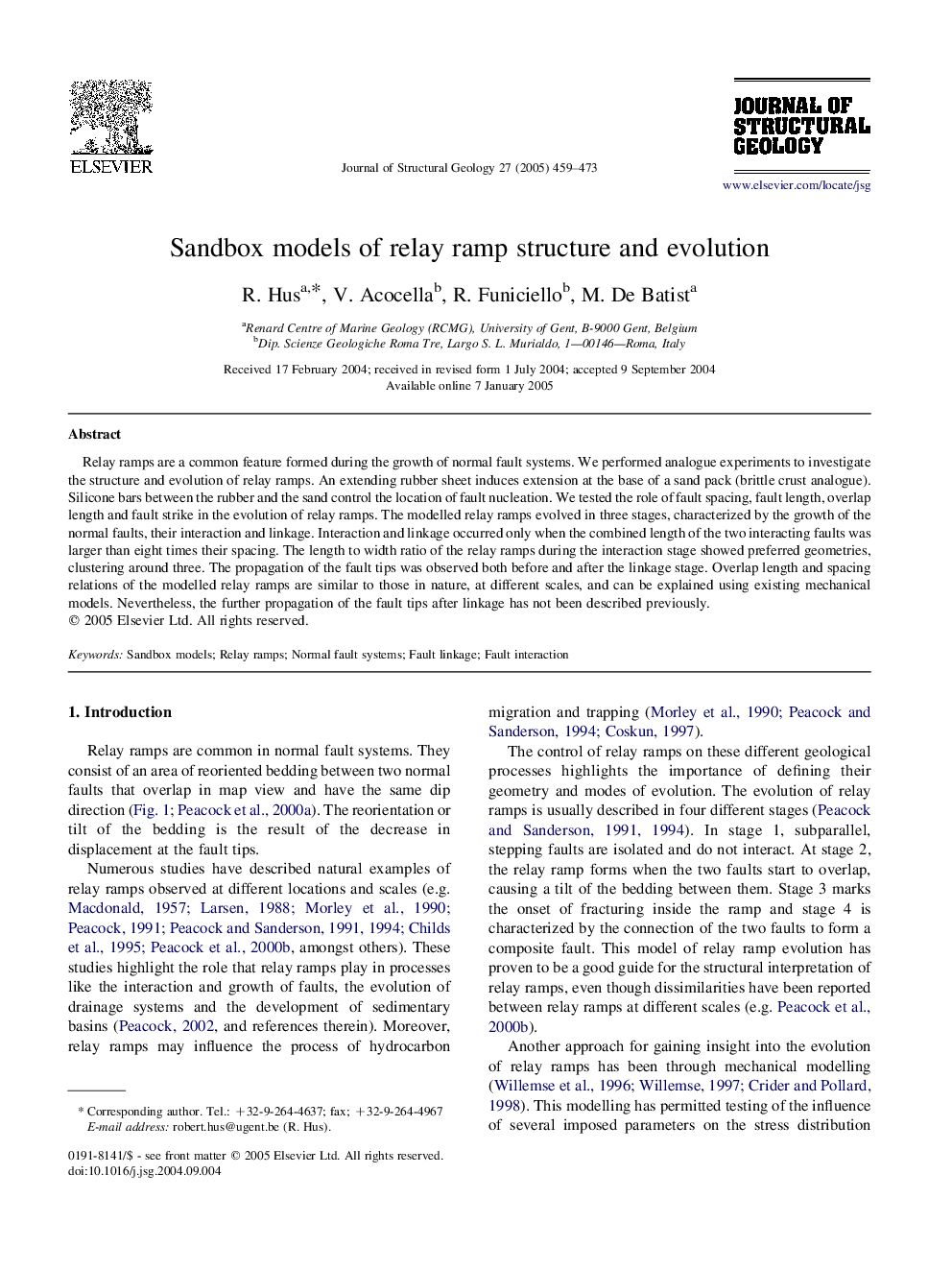| Article ID | Journal | Published Year | Pages | File Type |
|---|---|---|---|---|
| 9536613 | Journal of Structural Geology | 2005 | 15 Pages |
Abstract
Relay ramps are a common feature formed during the growth of normal fault systems. We performed analogue experiments to investigate the structure and evolution of relay ramps. An extending rubber sheet induces extension at the base of a sand pack (brittle crust analogue). Silicone bars between the rubber and the sand control the location of fault nucleation. We tested the role of fault spacing, fault length, overlap length and fault strike in the evolution of relay ramps. The modelled relay ramps evolved in three stages, characterized by the growth of the normal faults, their interaction and linkage. Interaction and linkage occurred only when the combined length of the two interacting faults was larger than eight times their spacing. The length to width ratio of the relay ramps during the interaction stage showed preferred geometries, clustering around three. The propagation of the fault tips was observed both before and after the linkage stage. Overlap length and spacing relations of the modelled relay ramps are similar to those in nature, at different scales, and can be explained using existing mechanical models. Nevertheless, the further propagation of the fault tips after linkage has not been described previously.
Related Topics
Physical Sciences and Engineering
Earth and Planetary Sciences
Geology
Authors
R. Hus, V. Acocella, R. Funiciello, M. De Batist,
